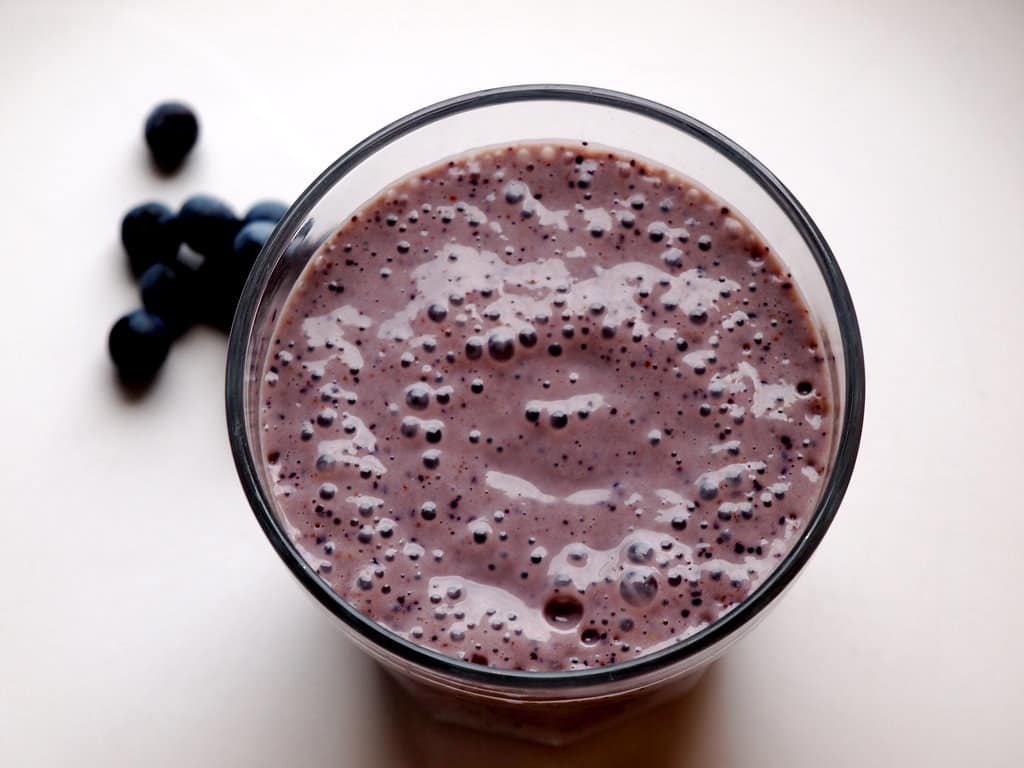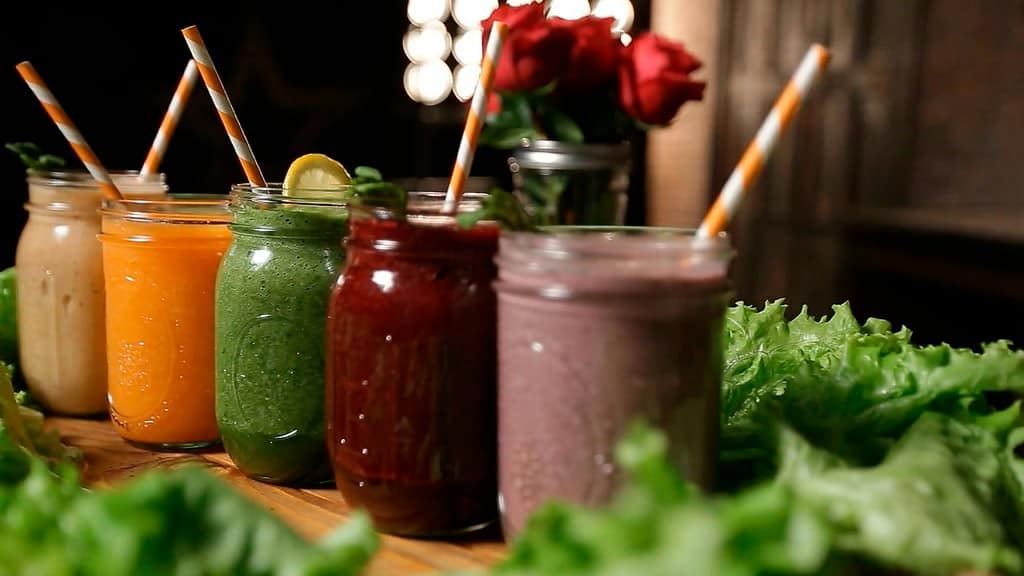Smoothies are a popular choice for a speedy breakfast or a nourishing snack. They’re also a convenient way to incorporate more fruits and vegetables into our diet. But while the individual fruits in smoothies are well-studied (and are good for you), the combination of fruits is less studied.
In a new study, scientists found that adding bananas to a berry smoothy reduces the flavanols, a group of bioactive compounds good for your health, by 84%. This doesn’t mean that bananas make for bad smoothies, but it hints that ideally, you wouldn’t mix bananas and fruits with flavanols.

Flavanol-rich fruits typically include apples, grapes, pears, tea, cocoa, and berries. We should first say that there’s more to healthy nutrition than flavanols. This is just one component that makes berries healthy, there are plenty of other things to consider. But if you want to optimize your nutrition, it’s something you can consider.
Optimizing smoothies
Researchers used smoothies to test how different levels of polyphenol oxidase (an enzyme found in many fruits and vegetables) affects the absorption of flavanols by the body. Flavanos are a natural compound commonly found in foods and drinks that can reduce inflammation and protect your vascular (blood system).
We should be consuming between 400 and 600 milligrams of flavanols per day. A diet low in flavanols has been linked by previous studies to age-related memory loss.
“If you don’t consume enough flavanols, it can negatively affect cardiovascular health. In older adults, a deficiency of flavanols is also linked to cognitive decline. So, it’s clear we need them, but the question is how best to get flavanols from the food and drinks we consume,” Gunter Kuhnle, one of the study authors, said in a news release.
This is where bananas come in.
The right smoothie

When we peel a banana or cut an apple, the fruit turns brown very fast. This happens because of polyphenol oxidase (PPO), an enzyme naturally present in those foods. In their study, the researchers wanted to know whether drinking a smoothie made with different fruits containing PPO affected the amount of flavanols available to the body.
To find out, they gave volunteers a smoothie with banana and berries, a smoothie just with berries, or just a flavanol capsule by itself (the control group). The researchers then took blood and urine samples to measure how many flavanols were present after taking the smoothie or capsule. They found flavanol levels were reduced when bananas were included.
“We were really surprised to see how quickly adding a single banana decreased the level of flavanols in the smoothie and the levels of flavanol absorbed in the body,” Javier Ottaviani, study author, said in a news release. “This highlights how food preparation and combinations can affect the absorption of dietary compounds in foods.”
The researchers said that people who are trying to consume flavanols should consider making smoothies by combining flavanol-rich fruits such as berries, pineapple, and oranges. The findings don’t mean bananas are not a good fruit to eat alone or in smoothies, they clarified, but bananas may affect flavanol update very significantly. It is further worth noting that the study was conducted among a relatively small sample of people, and only men, so effects may be different depending on the person.
Next, they hope their study can lead others to look at how other foods are prepared and the effect of flavanols. For example, Ottaviani said tea is a big source of flavanols, and depending on how it’s prepared, a different amount of flavanols would be available for absorption. “This is certainly an area that deserves more attention,” he added.
The bottom line: if you really want to optimize your smoothie, put the berries in and save the banana for later. It’ll increase your flavanol intake.
Smoothie recipes that don’t mix bananas and flavanols
There are so many fruits and other ingredients out there that you shouldn’t really run out of ideas anytime soon. But just in case you are struggling with creativity, here are some ideas to show you can do a million smoothies without mixing bananas and flavanols.
Mango Avocado Smoothie
- Ingredients:
- 1 ripe avocado
- 1 cup mango chunks (fresh or frozen)
- 1 cup spinach or kale
- 1 cup almond milk or coconut milk
- 1 tablespoon honey or agave syrup (optional)
- Ice cubes (optional)
Peach Oatmeal Smoothie
- Ingredients:
- 2 ripe peaches, sliced
- 1/2 cup rolled oats
- 1 cup Greek yogurt (plain or vanilla)
- 1 cup almond milk
- A pinch of cinnamon
- Honey to taste (optional)
Tropical Coconut Smoothie
- Ingredients:
- 1 cup pineapple chunks
- 1 cup coconut milk
- 1/2 cup Greek yogurt
- 1/2 cup ice
- 1 tablespoon chia seeds (optional)
Carrot Ginger Smoothie
- Ingredients:
- 2 large carrots, peeled and chopped
- 1 inch fresh ginger, peeled
- 1 cup orange juice
- 1/2 cup plain Greek yogurt
- Honey to taste (optional)
- Ice cubes (optional)
Dark Chocolate and Cherry Smoothie
- Ingredients:
- 1 cup frozen cherries
- 1-2 tablespoons dark chocolate chips or cocoa powder
- 1 cup almond milk or coconut milk
- 1/2 cup Greek yogurt or coconut yogurt
- A drizzle of honey or maple syrup (optional)
- Ice cubes (optional)
Green Tea and Grape Smoothie
- Ingredients:
- 1 cup green grapes
- 1 cup brewed green tea (cooled)
- 1/2 cup cucumber slices
- 1/2 cup spinach or kale
- A few mint leaves
- Honey or agave syrup to taste (optional)
- Ice cubes (optional)
The study was published in the journal Food & Function.


